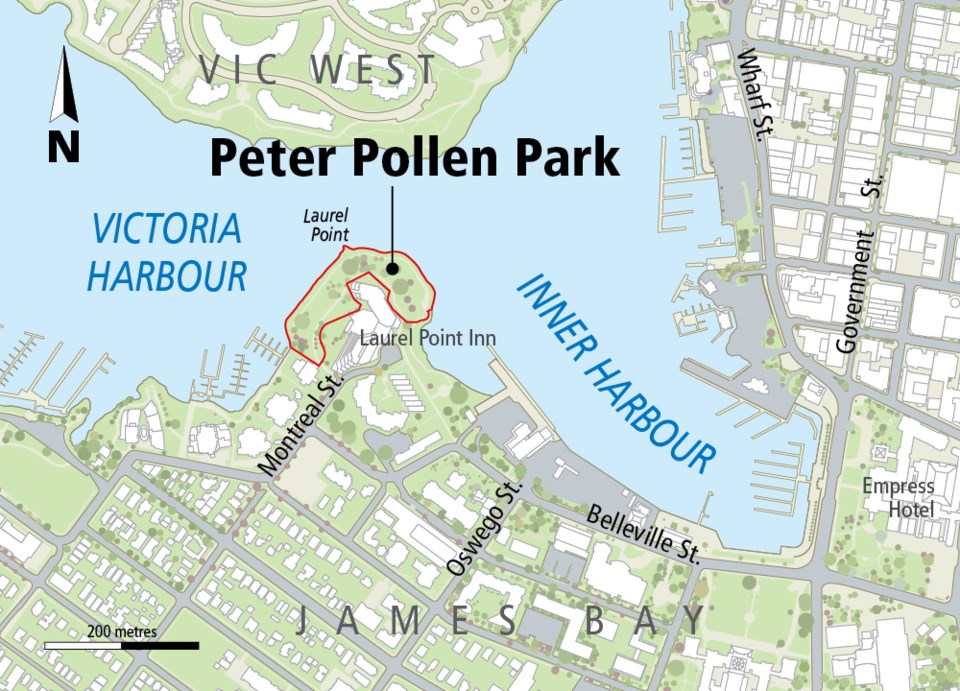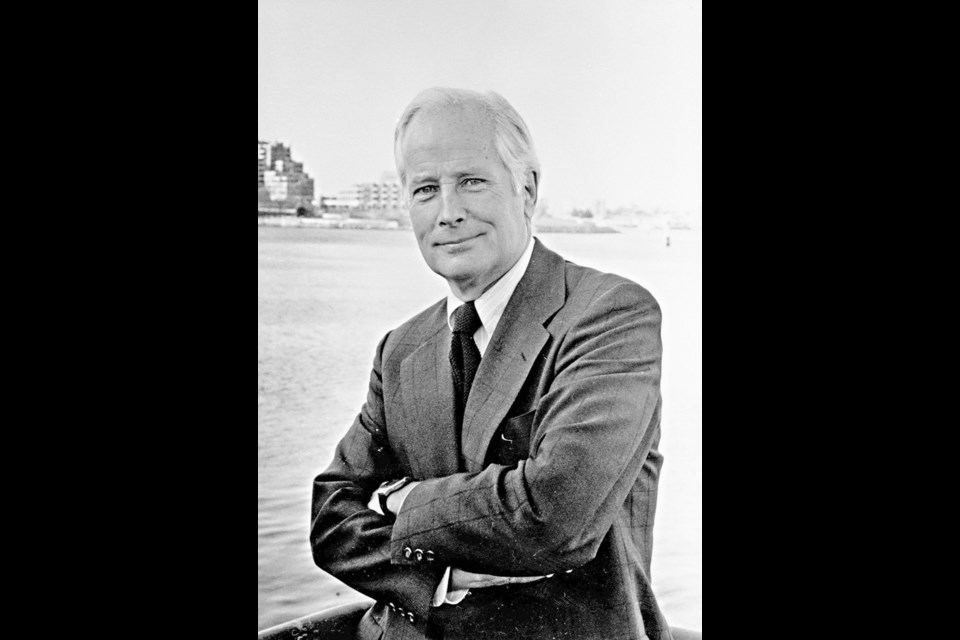Former Victoria Mayor Peter Pollen, whose passion and vision helped shape the city and its Inner Harbour, will be remembered with a waterfront park named in his honour.
The city announced Tuesday that the expanded and remediated three-acre site currently known as Laurel Point Park will be renamed Peter Pollen Waterfront Park at a ceremony on Oct. 26.
Pollen, who died in 2017, served four terms as the city’s mayor in the 1970s and 1980s and is widely credited with helping protect public access to the waterfront. His council established Laurel Point Park in 1975.
“He was a magnificent man with a magnificent vision for what the city of Victoria should be,” Victoria Mayor Lisa Helps said in an interview.
“A lot of the fabric of the city and particularly the fabric of the Inner Harbour is a testimony to his vision, which I think, at the time, people thought was maybe a little bit controversial. So it seemed like a fitting thing to do.”

MaryAnn Pollen said her late husband was enchanted by the city’s beauty, considered the Inner Harbour a “jewel,” and was committed to protecting what is now Laurel Point Park after a paint factory moved from that location in the early 1970s.
“I feel that this is a great honour for him,” she said. “It will be a lovely memory and touching for all of us in our family, especially.”
The city has also been working with Songhees and Esquimalt Nations to learn more about the significance of the land to Indigenous peoples and to determine its Lekwungen name, which will be included on any park signs.
“Historically, when namings have been done, it’s been an erasure of the traditional keepers of the land,” Helps said. “But, in this instance, I feel really proud of the fact that we’ve been working not only with the Pollen family, but also with the Lekwungen speakers. So, hopefully, it will be significant in that way as well.”
The naming of the park follows a massive clean-up at the site, which was home to the British American Paint Company factory from 1906 to 1975. The manufacturing of paint, lacquers and varnishes left soil in the area contaminated with metals, petroleum hydrocarbons, chlorophenols and polychlorinated biphenals (PCBs) that exceeded regulator standards.
Although park users were not considered to be at risk, the federal government said the contaminants posed a threat to the environment and launched remediation efforts. In all, Transport Canada removed 3,000 tonnes of contaminated sediment from the harbour and 75,000 tonnes of contaminated soil from the park, replacing it with clean dirt.
Transport Minister Marc Garneau announced in July that the project was complete and that the federal government intended to transfer its land — about 1.9 acres — to the city.
Victoria says the park will reopen once work concludes on restoring the seawall and upgrading the lower pathway. The city intends to consult with the public this year on further improvements to the park, which are expected to begin in 2020.



